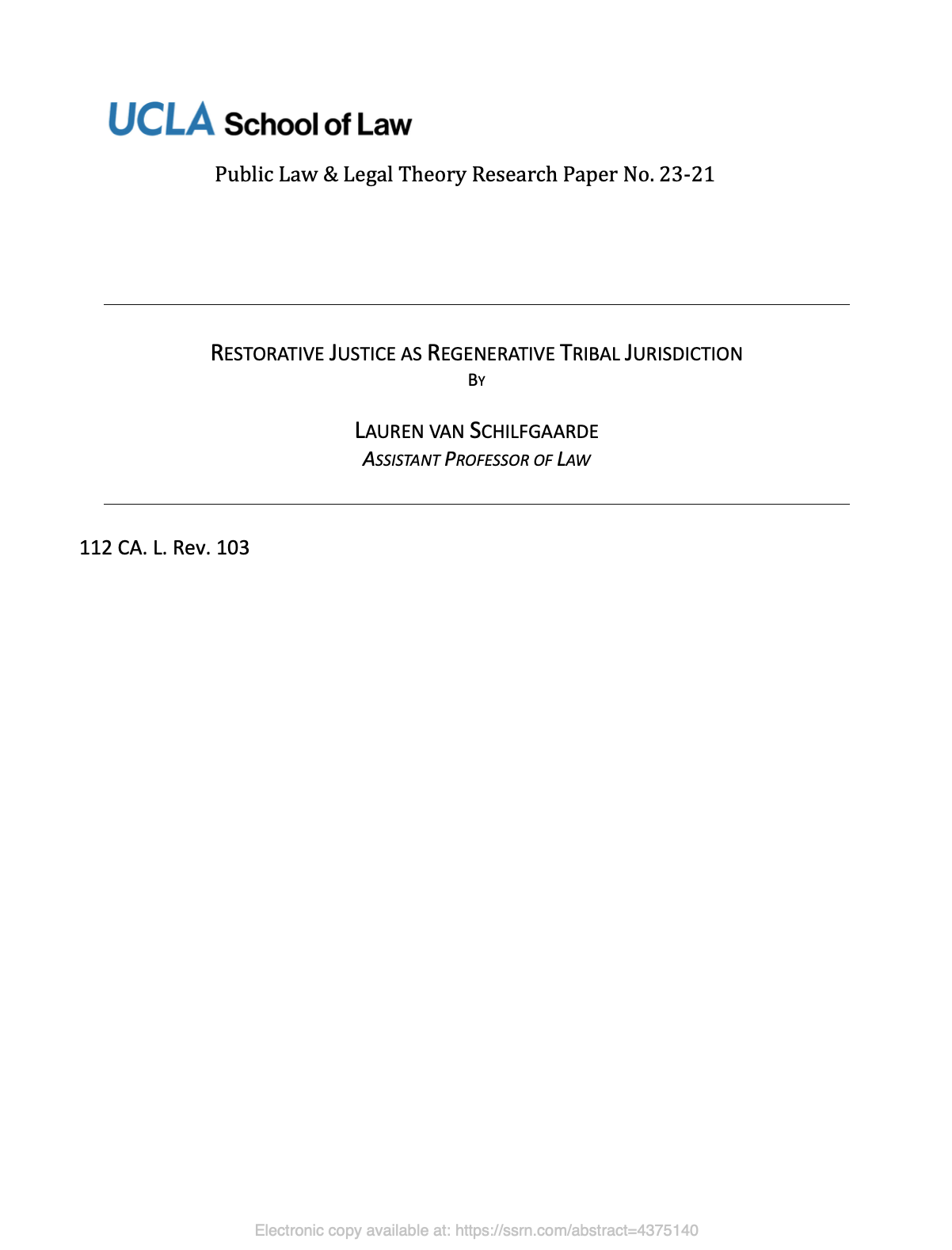
Okay, here is a 1200-word journalistic article in English on the effectiveness of Tribal Justice Systems.
Beyond the Gavel: Unpacking the Effectiveness of Tribal Justice Systems
In the sprawling tapestry of American jurisprudence, a unique and often misunderstood thread weaves through the fabric of the nation: Tribal Justice Systems. Operating under the inherent sovereignty of federally recognized Indigenous nations, these systems represent a profound alternative to the Western adversarial model, prioritizing community healing, cultural preservation, and restorative justice over punitive measures alone. But how effective are they truly? The answer, as complex as the histories they embody, reveals a landscape of remarkable successes, enduring challenges, and a persistent struggle for full recognition and resources.
For centuries, long before European contact, Indigenous nations governed themselves through sophisticated legal traditions rooted in their unique cultures, spiritual beliefs, and communal values. These systems, often oral and custom-based, focused on restoring balance, repairing harm, and reintegrating offenders into the community. The arrival of colonial powers, however, systematically undermined and, in many cases, outright suppressed these practices, imposing foreign legal frameworks. It wasn’t until the self-determination era of the mid-20th century that tribal nations began to reassert their inherent right to govern, including the crucial right to administer justice within their own territories.
Today, over 400 tribal courts operate across the United States, ranging from formal, Western-style courts with elected judges and codified law to traditional peacemaking councils that rely on elders, talking circles, and custom law. This diversity is, in itself, a testament to tribal sovereignty and cultural resilience.

A Philosophy of Restoration, Not Retribution
The fundamental difference between tribal justice and the mainstream U.S. system lies in its philosophical bedrock. While the U.S. system largely focuses on determining guilt and assigning punishment, tribal systems often aim for a more holistic outcome. "Our goal isn’t just to lock people up," explains Judge Robert Yazzie, former Chief Justice of the Navajo Nation Supreme Court, in numerous interviews on Navajo Peacemaking. "It’s to restore harmony, to heal the victim, the offender, and the community. We ask: ‘What happened? Who was harmed? What needs to be done to make things right?’"
This restorative paradigm is the cornerstone of many tribal justice initiatives. Practices like the Navajo Peacemaking Court, for instance, utilize community elders (naat’áanii) to mediate disputes, facilitate dialogue, and guide participants toward mutually agreeable resolutions that emphasize apology, restitution, and reconciliation. Offenders are often required to engage in community service, participate in cultural ceremonies, or make direct amends to victims, rather than merely serving jail time.
The effectiveness of this approach is often measured differently. While Western systems might track recidivism rates, tribal courts also consider factors like victim satisfaction, the repair of community bonds, and the re-engagement of offenders with their cultural identity. Studies, though limited, suggest promising outcomes. For example, evaluations of various tribal healing-to-wellness courts (similar to drug courts but culturally adapted) have shown lower recidivism rates compared to traditional criminal justice pathways for Indigenous offenders, along with improved substance abuse outcomes and greater community engagement.
The Mechanics of Justice: Diverse Approaches
The mechanisms by which tribal justice is administered are as varied as the tribes themselves.
- Formal Tribal Courts: Many tribes operate court systems that mirror state or federal courts, complete with written laws, prosecutors, public defenders, and appellate processes. These courts handle a wide range of civil and criminal cases, from traffic violations to serious felonies (within their jurisdictional limits, a critical point we will explore).
- Traditional Peacemaking Councils: Tribes like the Navajo, Cheyenne and Arapaho, and Haudenosaunee Confederacy utilize traditional methods. The Haudenosaunee, for instance, have long relied on a system of consensus-based decision-making and community responsibility. The healing circle model, employed by many tribes, brings together the victim, offender, their families, and community members to collectively address the harm and determine a path forward.
- Specialty Courts: Recognizing the unique challenges faced by their communities, many tribes have pioneered specialty courts. Tribal healing-to-wellness courts, for example, integrate traditional cultural practices, elder guidance, and culturally relevant therapeutic interventions into their drug and alcohol treatment programs. These courts often have higher success rates in addressing underlying issues like historical trauma and intergenerational addiction, which are often overlooked by mainstream systems.

Measuring Success: Beyond Statistics
Quantifying the effectiveness of tribal justice systems purely through Western metrics can be challenging and often misses the point. However, several indicators point to their success:
- Reduced Recidivism: While comprehensive national data is scarce, anecdotal evidence and specific program evaluations often highlight lower re-offense rates among participants in tribal justice programs, particularly those with a strong restorative or healing-to-wellness component. The cultural relevance of interventions and the focus on community support contribute significantly.
- Victim Satisfaction and Healing: Victims in tribal justice processes often report a greater sense of closure, validation, and active participation in the justice process. The emphasis on direct apology and restitution can be far more empowering than merely seeing an offender incarcerated.
- Community Cohesion and Cultural Preservation: Tribal courts are vital institutions for maintaining and revitalizing Indigenous languages, customs, and governance structures. By applying traditional law and engaging elders, they strengthen cultural identity and community bonds, which are critical for collective well-being.
- Cost-Effectiveness: Incarceration is incredibly expensive. By focusing on diversion, community-based solutions, and shorter detention periods, tribal courts can often achieve justice outcomes at a lower financial cost, while also addressing the root causes of crime more effectively.
- Addressing Historical Trauma: Many Indigenous communities suffer from intergenerational trauma due to colonization, forced assimilation, and systemic discrimination. Tribal justice systems are uniquely positioned to acknowledge and address these historical wounds as part of the healing process, fostering resilience and self-determination.
The Shadow of Challenges: Persistent Obstacles
Despite their inherent strengths and innovative approaches, tribal justice systems face formidable obstacles that often impede their full effectiveness.
- Jurisdictional Limitations: This is perhaps the most significant hurdle. The landmark 1978 Supreme Court case Oliphant v. Suquamish Indian Tribe stripped tribal courts of criminal jurisdiction over non-Indians, even for crimes committed on tribal land. This created a dangerous jurisdictional gap, leaving tribal communities vulnerable, especially to crimes committed by non-Native perpetrators who often escape justice. While the 2013 reauthorization of the Violence Against Women Act (VAWA) and its 2022 expansion restored some tribal jurisdiction over non-Indian perpetrators in specific domestic violence, dating violence, sexual assault, and trafficking cases, the Oliphant ruling continues to severely restrict tribal authority over a vast array of criminal acts.
- Underfunding and Under-resourcing: Tribal justice systems are chronically underfunded compared to state and federal systems. "We are asked to do more with less," states a tribal court administrator in a report by the National Congress of American Indians. "Our judges are often part-time, our staff is stretched thin, and we lack the resources for adequate training, technology, and essential support services like victim advocacy or mental health counseling." This lack of resources directly impacts their capacity to administer justice efficiently and effectively.
- Public Law 280: Enacted in 1953, Public Law 280 transferred criminal jurisdiction over certain tribal lands to specific states without tribal consent. This further complicated jurisdiction, often leading to a neglect of law enforcement on reservations and a disempowerment of tribal governments.
- Capacity Building: Many tribal courts struggle with recruiting and retaining qualified legal professionals, including judges, prosecutors, and public defenders, particularly in remote areas. Access to legal research tools, continuing legal education, and modern court administration technology is often limited.
- Modern Complexities: Tribal communities, like all others, grapple with complex issues such as drug epidemics, gang violence, and domestic abuse. Adapting traditional justice methods to these modern challenges, while maintaining cultural integrity, requires significant innovation and resources.
The Path Forward: Innovation and Resilience
The effectiveness of tribal justice systems is not a static measure but an evolving journey. Their continued success hinges on several critical factors:
- Full Recognition of Inherent Jurisdiction: Advocating for the restoration of full criminal jurisdiction over all persons on tribal lands is paramount to ensuring safety and justice within tribal communities.
- Equitable Funding: Federal and state governments must provide consistent and adequate funding to tribal justice systems, commensurate with their responsibilities and needs.
- Inter-jurisdictional Collaboration: Enhanced cooperation between tribal, state, and federal law enforcement and judicial systems is crucial for addressing complex cases and ensuring seamless justice.
- Cultural Revitalization: Continued efforts to document, teach, and apply traditional laws and peacemaking practices will strengthen the cultural foundation of tribal justice.
- Innovation and Adaptation: Tribal courts will continue to adapt and innovate, blending traditional wisdom with modern legal practices to meet the evolving needs of their communities.
In conclusion, Tribal Justice Systems are not merely alternative courts; they are vital expressions of Indigenous sovereignty, cultural identity, and a profound commitment to holistic justice. While they demonstrate remarkable effectiveness in fostering healing, repairing communities, and reducing recidivism through their restorative and culturally relevant approaches, their full potential remains constrained by historical injustices and ongoing jurisdictional and resource limitations. Supporting and strengthening tribal justice is not just about upholding treaty obligations; it is about recognizing a powerful, distinct, and highly effective model of justice that enriches the entire legal landscape and contributes to a more equitable and just society for all. The lessons learned from these systems—lessons of community, restoration, and profound respect for human dignity—offer valuable insights for justice systems worldwide.

